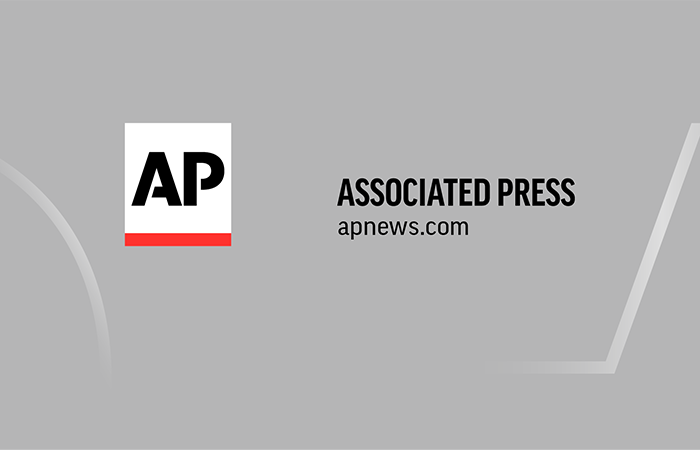The Education Tug-of-War: Navigating the DEI Landscape Under Trump’s Administration
February 28, 2025, 10:08 pm

Location: United States, District of Columbia, Washington
Employees: 501-1000
Founded date: 1916
In the current political climate, education has become a battleground. The recent push by the Trump administration to dismantle diversity, equity, and inclusion (DEI) programs in schools has sparked a fierce debate. This is not just a policy shift; it’s a cultural clash. Schools are caught in a storm, trying to balance compliance with federal directives and their commitment to inclusivity.
The Education Department's recent memo has sent ripples through the educational landscape. It broadens the implications of a Supreme Court ruling that limited race considerations in college admissions. Now, it threatens to touch every aspect of academic life—from hiring practices to graduation ceremonies. The memo claims that DEI initiatives have fostered racial stereotypes and discrimination. This assertion has ignited a firestorm of criticism.
Education leaders are treading carefully. Many are reluctant to make hasty changes. The American Council on Education has advised institutions to hold their ground. They emphasize that compliance with previous federal laws remains intact. The landscape is murky, and educators are looking for clarity. The stakes are high. Federal funding is the lifeblood of many institutions. Losing it could spell disaster.
However, some schools are already reacting. The University of Cincinnati is reevaluating its DEI initiatives. The president has indicated that the institution is removing DEI references from its website. This shift reflects a growing fear among educational leaders. They worry about the repercussions of non-compliance. The chancellor of the Colorado State University system echoed similar sentiments. He advised campuses to comply, stating that the risks are too great.
In Republican-led states, the response has been more supportive of the memo. Education chiefs are applauding the directive. They argue that race should not play a role in educational decisions. This perspective aligns with the administration's narrative, which claims that DEI efforts have unfairly disadvantaged white and Asian American students. The memo does not carry the weight of law, but it sets a new tone for how nondiscrimination laws will be interpreted.
Yet, the backlash is mounting. The American Federation of Teachers has filed a lawsuit against the Education Department. They argue that the memo oversteps its authority and threatens the integrity of educational programs. The lawsuit highlights a critical point: how can schools teach a comprehensive U.S. history course without addressing systemic racism? The memo’s broad language raises concerns about the future of student organizations and programs that celebrate diverse backgrounds.
The Education Department's approach is reminiscent of a chess game. Each move is calculated, but the consequences are unpredictable. Investigations into schools can take years, and the process to revoke federal funding is complex. The last time such a penalty was enforced was in 1992. This history suggests that while the threat is real, the execution may be less straightforward.
In the meantime, educators are left in a state of confusion. Many are seeking guidance from legal experts. They want to understand the implications of the memo fully. The fear of losing federal funding looms large. Schools are grappling with the question: how do we uphold our values while navigating this new landscape?
The tension is palpable. Some leaders fear that a lack of action could erode trust within their communities. If schools signal that they will not support marginalized groups, they risk alienating students and families. This is a delicate balance. The heart of education lies in fostering an inclusive environment. When that is threatened, the very foundation of learning is at stake.
As the situation unfolds, the role of advocacy groups becomes crucial. Organizations dedicated to civil rights are pushing back against the administration's directives. They argue that education should be a space for open dialogue and exploration of diverse perspectives. The fight for DEI is not just about policies; it’s about the future of education itself.
The coming months will be critical. Schools must navigate this turbulent terrain with care. The potential for legal battles looms large, and the outcome could reshape the educational landscape for years to come. As educators, students, and parents watch closely, the stakes have never been higher.
In this tug-of-war over education, the question remains: will schools stand firm in their commitment to diversity and inclusion, or will they bend to the pressures of political agendas? The answer will define the future of education in America. The path forward is fraught with challenges, but the resilience of educators and advocates will be tested. In the end, education should be a beacon of hope, not a pawn in a political game. The fight for inclusivity is far from over.
The Education Department's recent memo has sent ripples through the educational landscape. It broadens the implications of a Supreme Court ruling that limited race considerations in college admissions. Now, it threatens to touch every aspect of academic life—from hiring practices to graduation ceremonies. The memo claims that DEI initiatives have fostered racial stereotypes and discrimination. This assertion has ignited a firestorm of criticism.
Education leaders are treading carefully. Many are reluctant to make hasty changes. The American Council on Education has advised institutions to hold their ground. They emphasize that compliance with previous federal laws remains intact. The landscape is murky, and educators are looking for clarity. The stakes are high. Federal funding is the lifeblood of many institutions. Losing it could spell disaster.
However, some schools are already reacting. The University of Cincinnati is reevaluating its DEI initiatives. The president has indicated that the institution is removing DEI references from its website. This shift reflects a growing fear among educational leaders. They worry about the repercussions of non-compliance. The chancellor of the Colorado State University system echoed similar sentiments. He advised campuses to comply, stating that the risks are too great.
In Republican-led states, the response has been more supportive of the memo. Education chiefs are applauding the directive. They argue that race should not play a role in educational decisions. This perspective aligns with the administration's narrative, which claims that DEI efforts have unfairly disadvantaged white and Asian American students. The memo does not carry the weight of law, but it sets a new tone for how nondiscrimination laws will be interpreted.
Yet, the backlash is mounting. The American Federation of Teachers has filed a lawsuit against the Education Department. They argue that the memo oversteps its authority and threatens the integrity of educational programs. The lawsuit highlights a critical point: how can schools teach a comprehensive U.S. history course without addressing systemic racism? The memo’s broad language raises concerns about the future of student organizations and programs that celebrate diverse backgrounds.
The Education Department's approach is reminiscent of a chess game. Each move is calculated, but the consequences are unpredictable. Investigations into schools can take years, and the process to revoke federal funding is complex. The last time such a penalty was enforced was in 1992. This history suggests that while the threat is real, the execution may be less straightforward.
In the meantime, educators are left in a state of confusion. Many are seeking guidance from legal experts. They want to understand the implications of the memo fully. The fear of losing federal funding looms large. Schools are grappling with the question: how do we uphold our values while navigating this new landscape?
The tension is palpable. Some leaders fear that a lack of action could erode trust within their communities. If schools signal that they will not support marginalized groups, they risk alienating students and families. This is a delicate balance. The heart of education lies in fostering an inclusive environment. When that is threatened, the very foundation of learning is at stake.
As the situation unfolds, the role of advocacy groups becomes crucial. Organizations dedicated to civil rights are pushing back against the administration's directives. They argue that education should be a space for open dialogue and exploration of diverse perspectives. The fight for DEI is not just about policies; it’s about the future of education itself.
The coming months will be critical. Schools must navigate this turbulent terrain with care. The potential for legal battles looms large, and the outcome could reshape the educational landscape for years to come. As educators, students, and parents watch closely, the stakes have never been higher.
In this tug-of-war over education, the question remains: will schools stand firm in their commitment to diversity and inclusion, or will they bend to the pressures of political agendas? The answer will define the future of education in America. The path forward is fraught with challenges, but the resilience of educators and advocates will be tested. In the end, education should be a beacon of hope, not a pawn in a political game. The fight for inclusivity is far from over.

